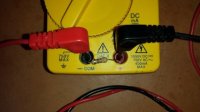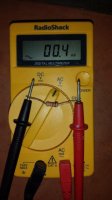SDmark
Member
Interesting article on ghost (stray) voltage: en.wikipedia.org/wiki/Stray_voltage. The last section discusses the use of a resistor shunt as you (or was it DonL) suggested. I see that Fluke even makes special stray voltage adapter (3 K ohm) and dual-impedence voltmeters.
I don't doubt that you and others here bring tremendous knowledge of electricity, in some cases probably exceeding what an electrician would know. On the other hand, an (experienced) residential electrician might be able to say, "yeah that stray voltage is normal on an 80-foot run, just ignore it," or "in 90% of cases, that's a grounding issue," or "the stray voltage is worrisome but first get that Stab Lok subpanel out of your house before you blow up."
 .
.
I don't doubt that you and others here bring tremendous knowledge of electricity, in some cases probably exceeding what an electrician would know. On the other hand, an (experienced) residential electrician might be able to say, "yeah that stray voltage is normal on an 80-foot run, just ignore it," or "in 90% of cases, that's a grounding issue," or "the stray voltage is worrisome but first get that Stab Lok subpanel out of your house before you blow up."
I'm an IT guy and programmer, yes with an analytical streak. I've done my own phone, network, and electrical wiring for decades, including 18 years in this house. I also do plumbing, drywall, and painting under duressIt seems like you're a trouble shooter for data or telephony


